|
Bruno Richard HAUPTMANN |

Mrs. Charles A. Lindbergh (the former Anne Morrow) holding her
son, Charles Augustus
Lindbergh, Jr.
This photo was made by his
illustrious aviator father.
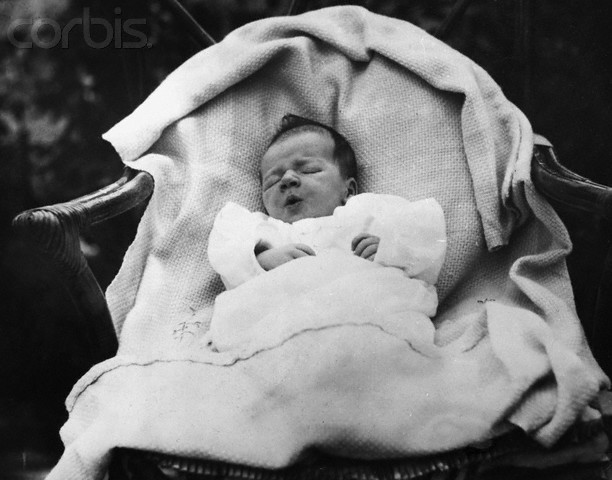
Charles Augustus Lindbergh, Jr.
Here he is himself- two weeks old. He was born June 22,
1930 in the
Morrow home in Englewood, New Jersey- his mother's birthday, and the
announcement of his name
came on the night of July 8.
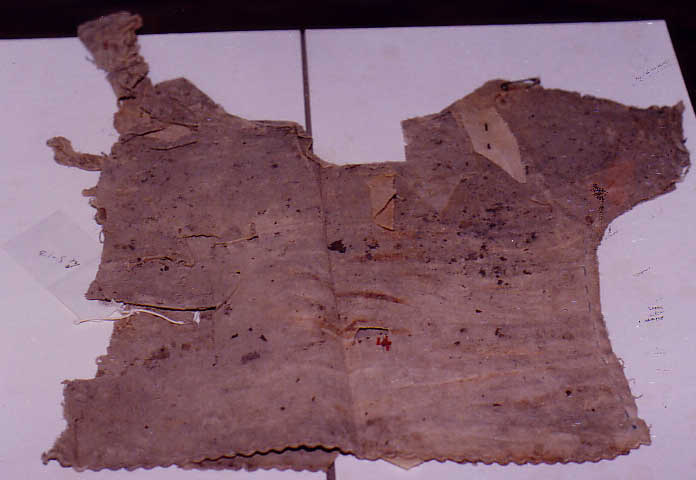
On the night of the kidnapping the baby's nursemaid, Betty Gow,
made the boy this shirt to
wear next to his skin
for warmth. She cut out the sleeveless garment from a piece of
flannel she had been saving. In 2003 the
Lindbergh family removed this evidence from
the Lindbergh archives.
(JimFisher.edinboro.edu)

Betty Gow placed an additional, store-bought shirt over the one
she had made. This T-shirt
was one of
a batch of ten that had been purchased at the same time. The other
nine
shirts were at the Lindbergh
estate. In 2003 the Lindbergh family removed this evidence
from the
Lindbergh archives.
(JimFisher.edinboro.edu)
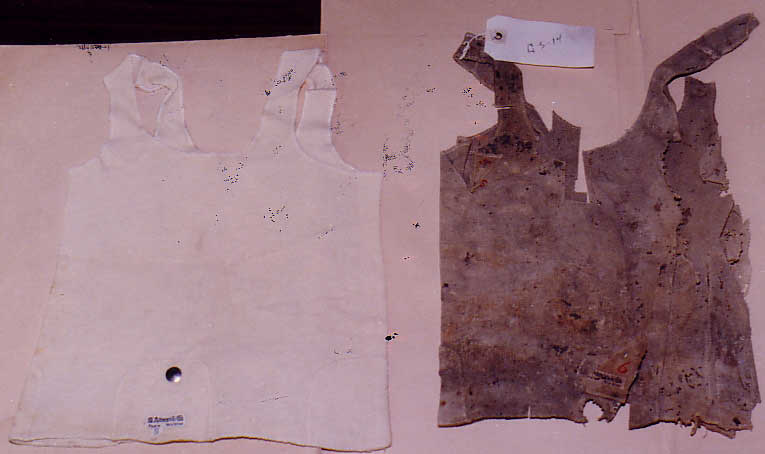
A comparison of the known (one of the 9 remaining T-shirts at the
estate) and questioned
(the shirt found
on the body of the child) sleeveless T-shirts. In 2003 the Lindbergh
family removed this evidence from
the Lindbergh archives.
(JimFisher.edinboro.edu)
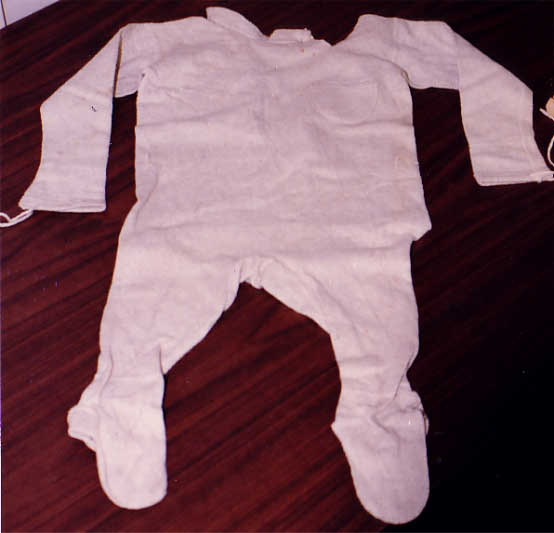
The one-piece Dr. Denton sleeping suit the baby wore on the night
of the kidnapping (front view).
The kidnapper mailed the laundered sleeping suit to Dr. Condon
eleven days after the crime.
In 2003 the Lindbergh family removed this evidence from the
Lindbergh archives.
(JimFisher.edinboro.edu)
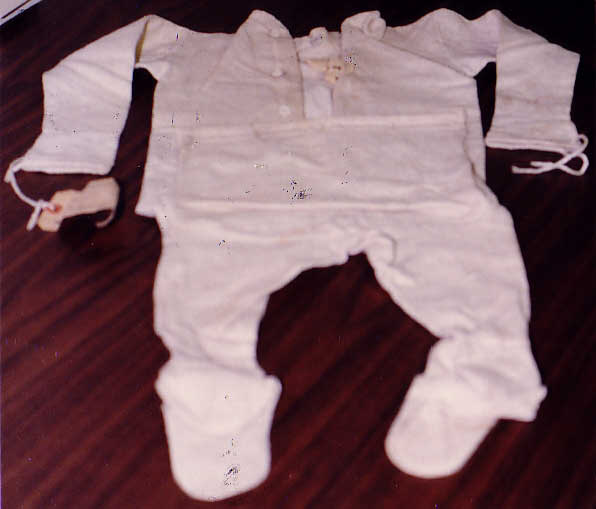
The one-piece sleeping suit the baby wore on the night of the
kidnapping (back view).
In 2003 the
Lindbergh family removed this evidence from the Lindbergh archives.
(JimFisher.edinboro.edu)
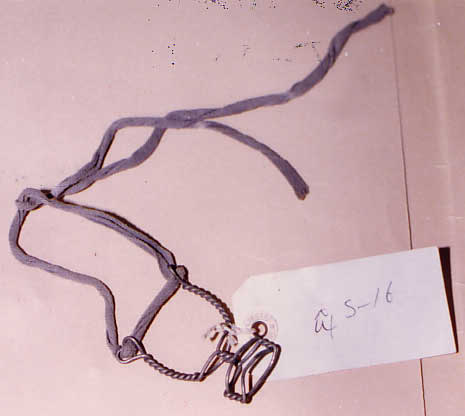
On the night of the kidnapping, Betty Gow tied a metal thumbguard
to each sleeve of the
child's sleeping suit.
On April 1, 1932, Gow found this thumbguard on the Lindbergh
estate
driveway still attached to the string that
had tied it to the baby's wrist.
In 2003 the Lindbergh family
removed this evidence from the Lindbergh archives.
(JimFisher.edinboro.edu)
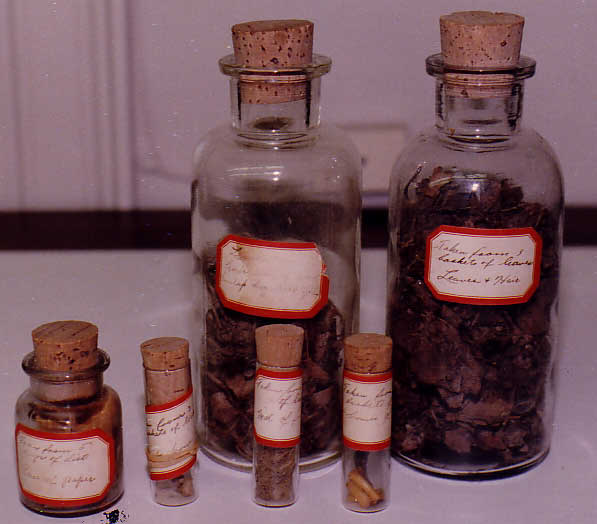
The bones (mostly foot and hand), hair follicles, toe nail, and
fiber fragments in the vials,
gathered by the
NJSP, are from the Lindbergh baby gravesite on Mount Rose Heights,
two miles from the Lindbergh estate.
In 2003 the Lindbergh family removed this evidence from the
Lindbergh archives.
(JimFisher.edinboro.edu)
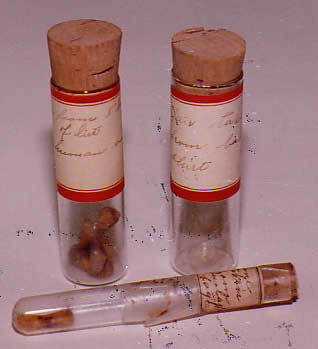
Vial laying down contains 1 human bone. The two standing from
left to right contain
4 human bones and hair
from the Lindbergh baby. In 2003 the Lindbergh family
removed this
evidence from the Lindbergh archives.
(JimFisher.edinboro.edu)
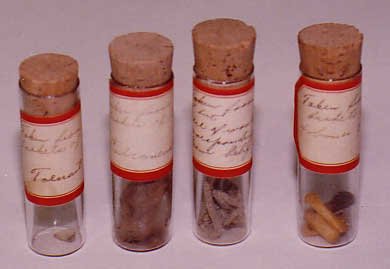
From left to right the vials contain: toe nail; calcaneous bone
(human heel bone);
piece of wool from baby's
shirt; and 4 human bones. In 2003 the Lindbergh family
removed this
evidence from the Lindbergh archives.
(JimFisher.edinboro.edu)
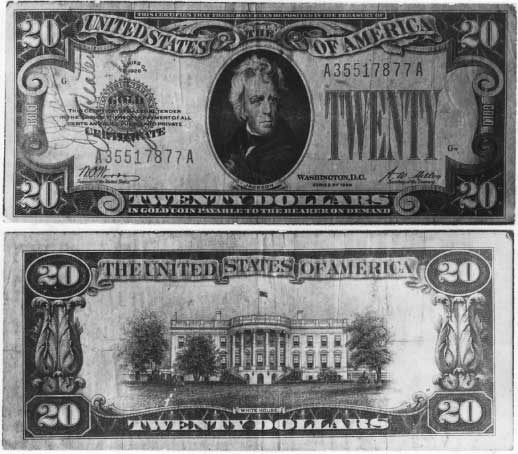
The ransom bill on Hauptmann's person when he was arrested in New
York City.
(JimFisher.edinboro.edu)
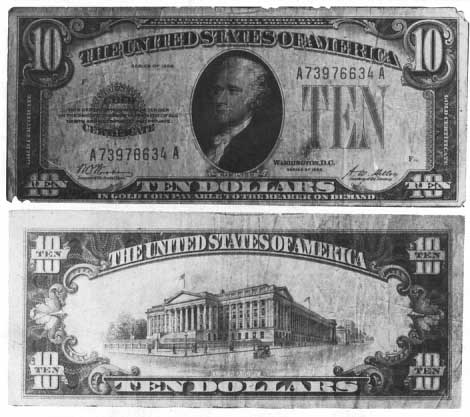
The ten-dollar ransom bill passed by Hauptmann at the
Warner-Quinlan gas station in upper
Manhattan.
One of the attendants penciled Hauptmann's license number - 4U13-41
- on the
margin of the bill.
This information broke the case and led to Hauptmann's arrest.
(New
Jersey State Police)
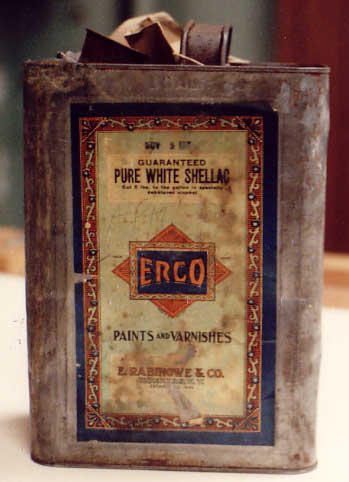
One-gallon shellac can found hidden in Hauptmann's garage
containing
$11,930 in ten
and twenty dollar ransom bills.
(JimFisher.edinboro.edu)
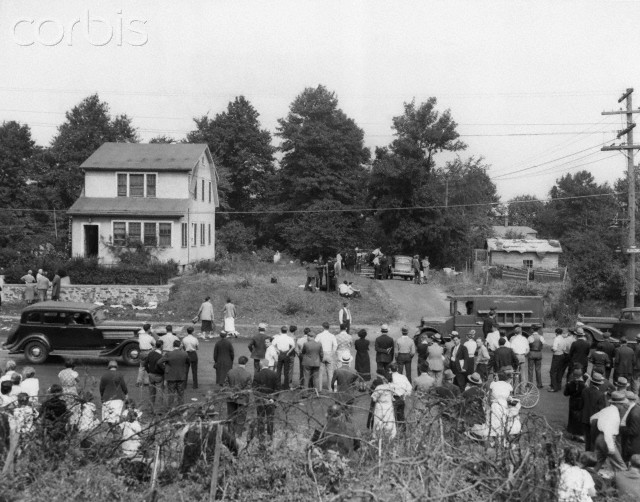
House and garage of Bruno Hauptman in New York City where more
than $13,000 of the
ransom money
was recovered. Hundreds of people
gathered here.
|
|
|















